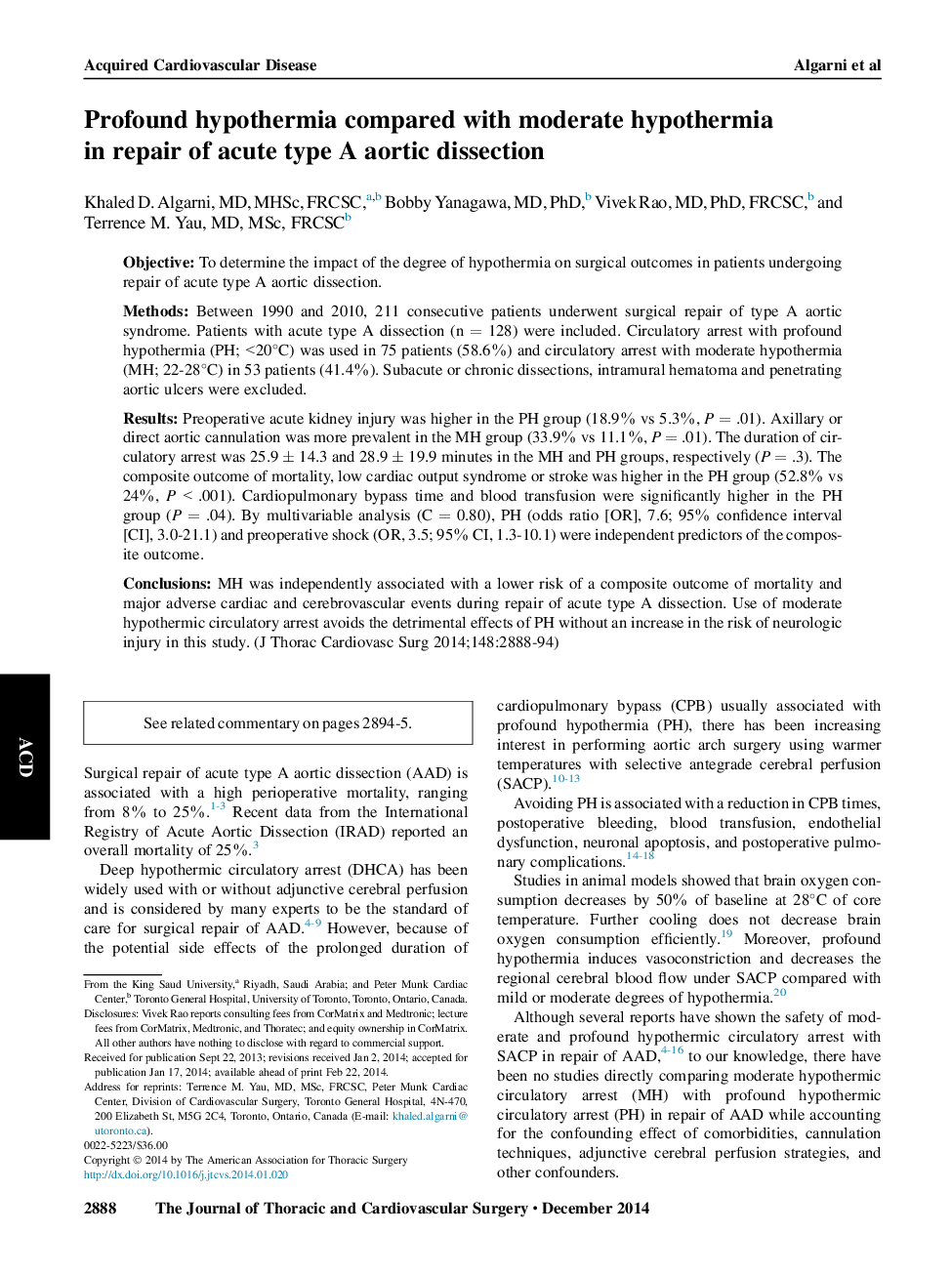| Article ID | Journal | Published Year | Pages | File Type |
|---|---|---|---|---|
| 5989965 | The Journal of Thoracic and Cardiovascular Surgery | 2014 | 7 Pages |
ObjectiveTo determine the impact of the degree of hypothermia on surgical outcomes in patients undergoing repair of acute type A aortic dissection.MethodsBetween 1990 and 2010, 211 consecutive patients underwent surgical repair of type A aortic syndrome. Patients with acute type A dissection (n = 128) were included. Circulatory arrest with profound hypothermia (PH; <20°C) was used in 75 patients (58.6%) and circulatory arrest with moderate hypothermia (MH; 22-28°C) in 53 patients (41.4%). Subacute or chronic dissections, intramural hematoma and penetrating aortic ulcers were excluded.ResultsPreoperative acute kidney injury was higher in the PH group (18.9% vs 5.3%, P = .01). Axillary or direct aortic cannulation was more prevalent in the MH group (33.9% vs 11.1%, P = .01). The duration of circulatory arrest was 25.9 ± 14.3 and 28.9 ± 19.9 minutes in the MH and PH groups, respectively (P = .3). The composite outcome of mortality, low cardiac output syndrome or stroke was higher in the PH group (52.8% vs 24%, P < .001). Cardiopulmonary bypass time and blood transfusion were significantly higher in the PH group (P = .04). By multivariable analysis (C = 0.80), PH (odds ratio [OR], 7.6; 95% confidence interval [CI], 3.0-21.1) and preoperative shock (OR, 3.5; 95% CI, 1.3-10.1) were independent predictors of the composite outcome.ConclusionsMH was independently associated with a lower risk of a composite outcome of mortality and major adverse cardiac and cerebrovascular events during repair of acute type A dissection. Use of moderate hypothermic circulatory arrest avoids the detrimental effects of PH without an increase in the risk of neurologic injury in this study.
